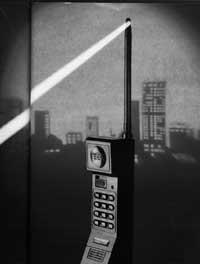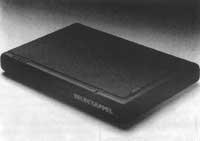New telephone systems
1992/11/01 Otaolaurretxi, Jon Iturria: Elhuyar aldizkaria
Image Phone
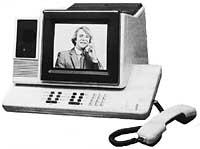
The “bisiophone”, which in addition to the word transmits the images of the interviewees, was premiered in 1983 as a Biarritz experiment. The program “Elhuyar” of 1986. In number 4 “Zientzia eta Teknika” was extensively exhibited in the article by Xabier Barandiaran and Joxerra Aizpurua.
This trial has shown that the system works technically, but for one reason it has not had continuity. In fact, the network built in Biarritz transmits the images through analog signals and currently engineers have prepared a much more advanced numerical transmission network. In addition to the numerical network, in addition to the transmission of images, other telematic services are offered: telecopy, minitel, transmission of computer-generated images, etc.
In France the numerical network has been called “Numéris” and the biopsyphone will spread through it. Within five years they want to keep the network running statewide, so they are looking for 5,000 pounds or 100,000 pesetas of appliances. Engineers have enough work to make the visiophone accessible to everyone, as the cost of prototypes made to date has been 200,000 pounds or 4,000,000 pesetas.
Telephone in trains and planes
For almost three years more than 280 cabins have been installed in France on High Speed Trains: Around 185 in the Atlantic TAV and 95 in the Mediterranean. If you call on the phone during these trains, it will cost you 15 pounds (or 300 pesetas) per minute.
This seems cheap compared to your airplane fares. British Airways, for example, has installed since 1989 their phones on their Boeing 747 aircraft and 70 pounds per minute (or 1,400 pesetas) cobra.
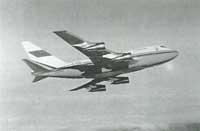
It should be clarified that in intercontinental travel satellites are used to talk on the phone from the plane. The airborne radio system and fuselage antennas send signals to the Inmarsat Atlantique-Est satellite, funded by 53 states. The satellite is associated with the headquarters located in Goonilly, Great Britain, to which it sends the identity of the plane, the customer's credit card number and the phone number to which the call must be made.
Although the fare is expensive, do not forget that you have to use the satellite and ground stations that add up to twenty. These stations have powerful amplifiers and parabolic antennas 15 meters in diameter to receive and broadcast signals from 36,000 kilometers.
However, specialists only want to use satellite communications for intercontinental transmissions because there is no other solution. In the project called “Satellite Aircom”, Australian OTC, French “Telecom”, Canadian “Téléglobe” and the International Association of Aeronautical Telecommunications four Inmarsat satellites covering the world.
For the phone of the planes that circulate on the continent, since 1984 they use another system in North America. In the United States there are about 600 planes with public telephone. On the ground there are 68 stations scattered and the receiver of the plane chooses the ground station that has at every moment in the sense of the journey and that ensures a conversation of at least ten minutes. On the plane there is no need for expensive equipment, as it is enough to reach the signal about 250 km. Earth stations, which require 40-watt relays on average and classic antennas, are also normal. Therefore planes have no expensive fares: the first three minutes 500 sts (or 25 pounds) and the next 160 sts (8 pounds) per minute.
In Europe the companies British Airways, Air-France, Air-Inter and SAS are building a similar network. For this they have about twelve stations in Britain and France that collect signals up to 240 kilometers.
Telephone in cars
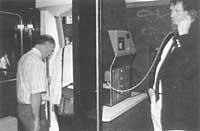
Although the train phone and the plane seem a luxury, car phones are considered normal. There are more and more radio phones in cars and the market cannot refuse.
However, when the number of subscribers in a city is high, interference increases. To solve the problem of wave accumulation, in France the territories were divided in 1985, giving each of them a different frequency band. However, if many radio phones are in a small place, as in Paris, the frequencies are saturated. Therefore, in Paris they have rejected two more years of subscribers and two years ago they had to launch the high density network.
Through the European cell phone that began operating last year is expected to overcome these barriers. Via this network you can call from any vehicle that travels through Europe to any point in Europe. The system called GSM may contain up to fifteen million subscribers. Unlike the classical radio network in the GSM system, there can be three simultaneous communications in one frequency. The mechanism called TDMA (Time Division Multiple Acces) allows the alternative passage of three communications at a certain frequency. The device consists of encoder and decoder to convert the human voice into numeric signal (0 or 1, binary signal) and vice versa.
With TDMA the frequency utilization time is divided into 6.7 milliseconds intervals per second and the three communications signals are sent alternately. To a communication, therefore, breaks of 13.4 seconds are interspersed, but the decoder takes advantage of these pauses to convert the message signals into sounds. Therefore, the listener does not perceive interruptions.
In the GSM network that groups 17 states, the division of Europe into many areas or cells is expected. Each cell will have a subfrequency taken from the 900 MHz band and is expected to take a few years to launch the entire network.
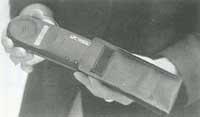
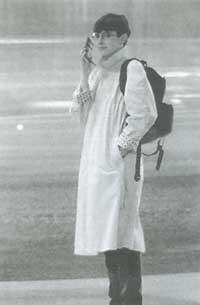
In North America they also want to launch a network similar to the European one, but perhaps with an innovation. A system devised by the Californian company “Qualcom” questions American telecommunications companies. It is called CDMA (Code Dgital Multiply Access) and can be performed at the same frequency and simultaneously up to twenty communications. It basically consists of assigning a personal code to each radio phone, that is, a numbered word that provides access when the call is made. The relay that unites two people who speak “brand” with that code the signals of that conversation and the two devices only decode them. Thanks to this system, in fact, the entire network of the radio phone would work with a single frequency, but the twenty simultaneous communications ordered by “Qualcom” are still being tested.
Telephone in pedestrian pocket
If you think of calling someone when walking down the street, now you have to speak for a booth or a bar. In the Strasburg of Alsace, however, pedestrians have another opportunity. Since last year, distributed throughout the city, they have 750 fixed telephone points so that pedestrians can speak from the phone “Pointel” they carry over (size of a small calculator). The network uses a band of 864 and 868 MHz and the pedestrian can distance up to 200 meters from the fixed point, being able to talk to any of the places in which it is located.
The unit price is 30,000 pts. or 1,500 pounds and each subscriber will have a code that will allow you to access the network and later charge the companies. In Paris, another year, it is intended to install 1,500 fixed points distributed throughout the city and is expected to expand the system to many other cities by 1995.
Worldwide phone
The American house Motorola has prepared a project called Iridium to develop a worldwide network of radiophones. To do this he wants to place 77 satellites at 750 kilometers of altitude. Once the project is completed, which will cost 13 million dollars, anyone in any corner can also talk to any of the antipodes on Earth. The device would be similar to walkie-talkies and would weigh about seven hundred grams. Appliance price 360.000 pts. o 18,000 pounds with a usage cost of between 300 and 400 sts. per minute. or 15-20 pounds.
If the project is carried out within the planned period, in 1997 we will have the world radio telephone in place.

Gai honi buruzko eduki gehiago
Elhuyarrek garatutako teknologia




